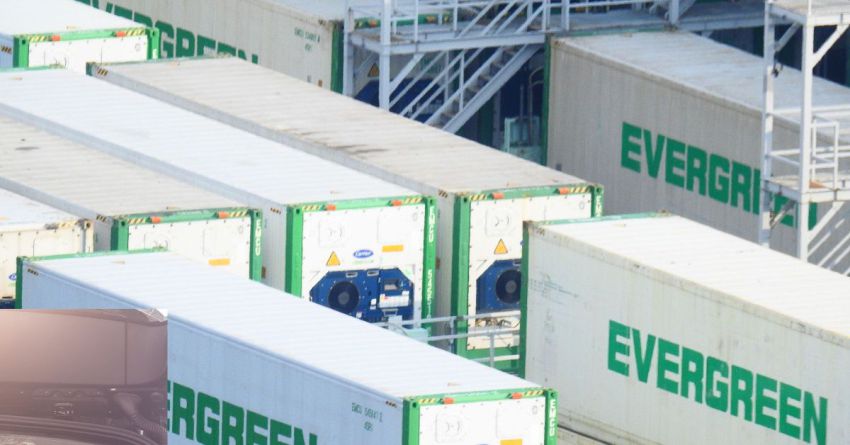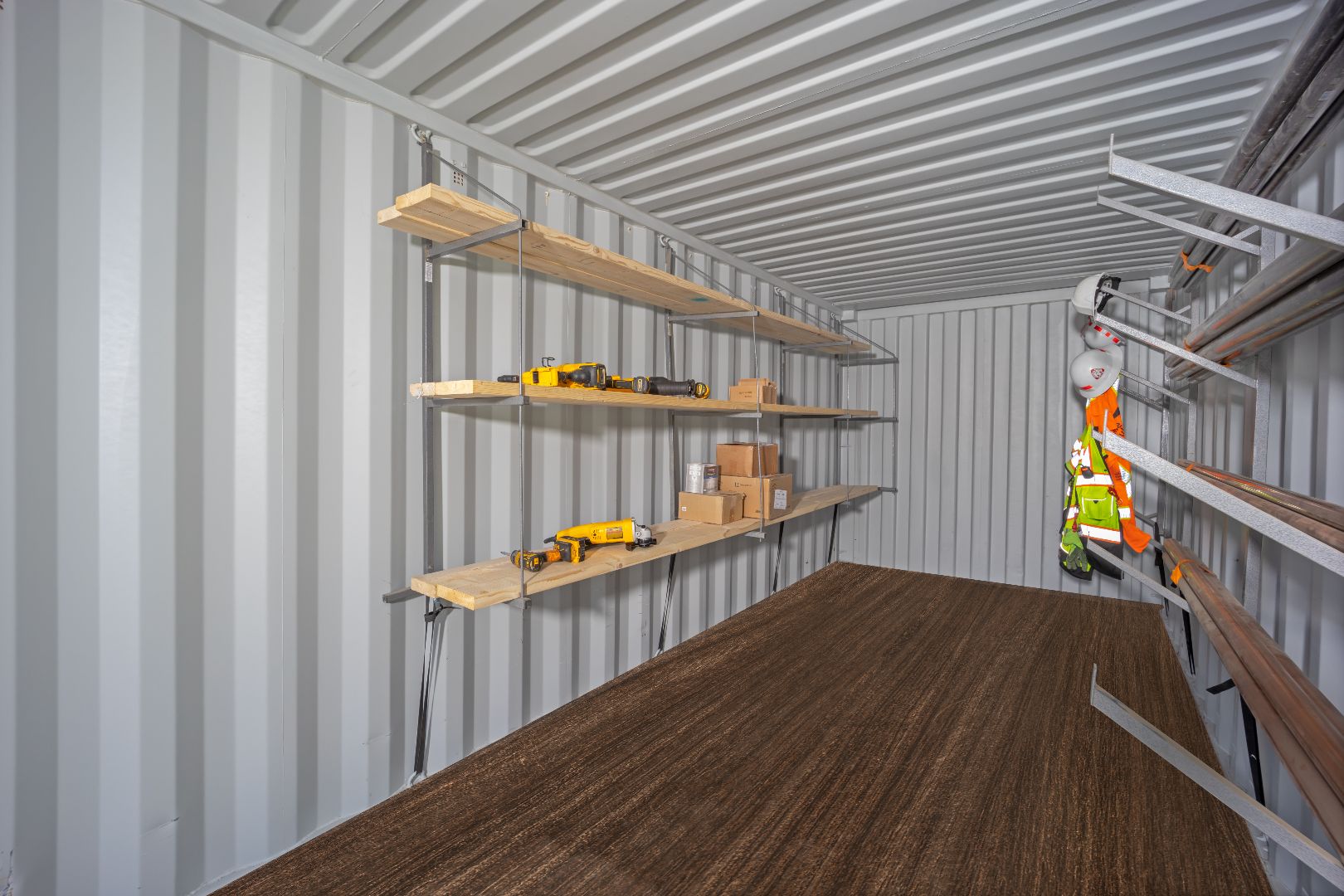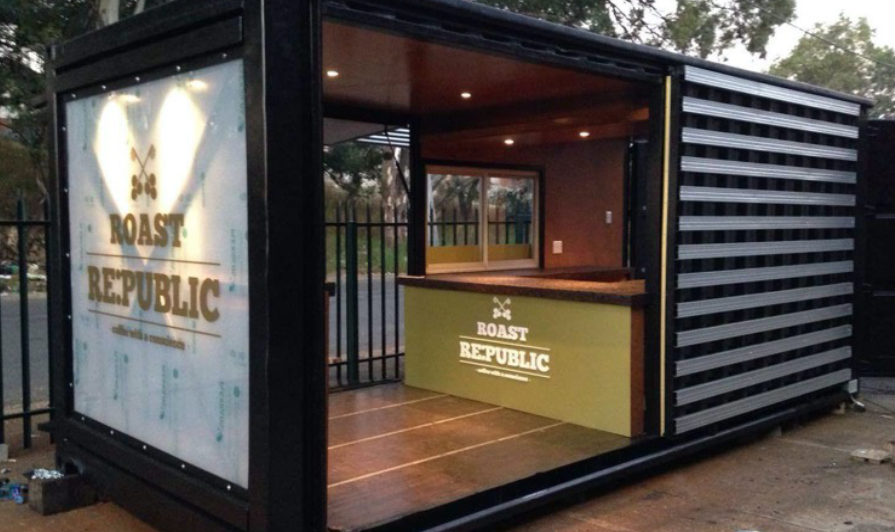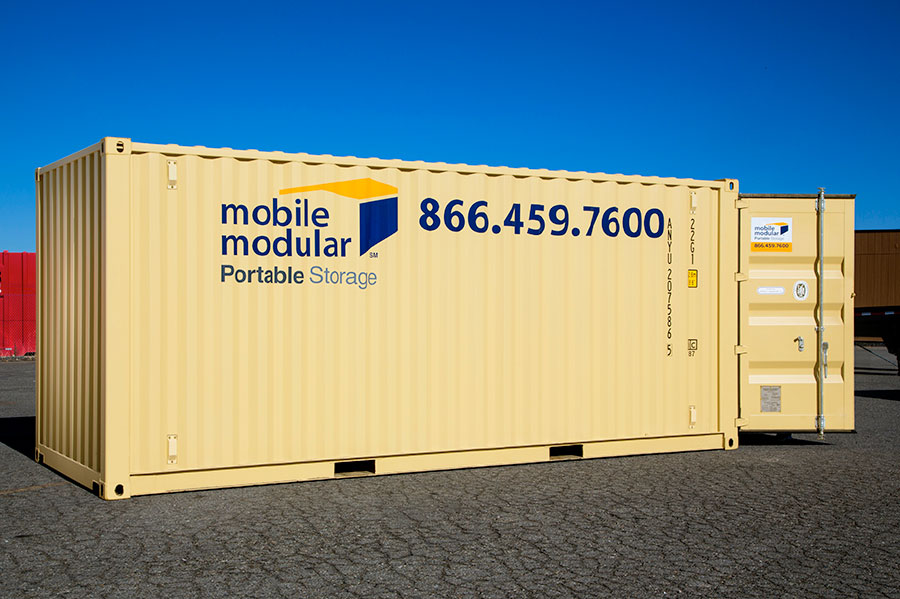- Rent, Lease, or Purchase
- |
November 18, 2021
What is a Reefer Container?

Reefer containers have a long history, dating back more than 40 years. Early refrigerated containers, or reefers, found applications primarily in transporting temperature-sensitive products and perishable cargo over long distances.
Today, restaurants, farming operations, and packing houses increasingly use refrigerated containers on-site. In addition, several industries worldwide have started to use refrigerated shipping containers as coolers or freezers.
Reefer container units are ideal for temporary storage needs during renovations or for creating additional storage during seasonal peaks in order to keep fruits, vegetables, meat, and pharmaceuticals at the required temperature.
How Does a Reefer Container Work?
A generator set, often referred to as a genset, attached to the container provides the container with cooling and electricity. These generator sets are usually powered by either fuel or electricity.
The dual-generator source allows the container to work both overseas and on the road. Another advantage of this dual-power source is that it gives reefers the ability to maintain your shipment's temperature, even in the most adverse conditions.
Reefer containers have specially designed floors with grooves, known as T-shaped decking, which helps the container distribute cold air from the bottom, creating a consistent supply of chilled air around the entire shipment. This cool air from the unit blows through the vents from the bottom to the back door. Warm air from the top of the container flows back to the refrigeration unit, where it chills again and returns back to the interior.
Some reefers also allow fresh air from the environment to enter the refrigeration cycle. As fresh air flows in, carbon dioxide and ethylene-filled air move out from the container. These containers prevent the premature spoilage of fruits.
Please note that reefer units only maintain the pre-cooled cargo temperature for the time of transport. They do not generally reduce the cargo temperature during transportation.
Types of Reefer Containers

There are a variety of refrigeration units available on the market. Containers will differ depending on their service condition, efficiency requirements, and the cargo they need to carry.
One-Trip Containers
One-trip reefers have made just one trip across the ocean and will arrive in excellent condition, with all sections working reliably. A one-trip reefer unit can achieve extremely cold temperatures.
Used Containers
Used containers are a more affordable option for businesses that don't have the means for a high upfront investment. A used refrigeration unit may have sustained some wear and tear throughout its lifecycle but still functions adequately. It is crucial to inspect any temperature-controlled used reefer before purchase to ensure that the cargo doors open quickly, there is perfect air exchange, and the conditions are cold enough to store perishable goods.
Closed Reefer Containers
A closed reefer container is a single unit with an automatic heating and cooling system that runs exclusively on electricity. These units function primarily as cold storage and are not generally used for transporting goods.
Modified/Controlled Atmosphere(MA/CA) Containers
These containers use an air exchange system to maintain an ideal set temperature, humidity levels, and ventilation for dedicated cold products that require a specific environment. MA/CA reefers are also heavily insulated, which helps in temperature control.
Automatic Fresh Air Management (AFAM) Containers
AFAM reefers are the most advanced type of temperature-controlled reefer units. These containers use a control unit that automatically regulates the air exchange inside to maintain the required temperature. With such precise levels of control, you can extend the shelf life of the goods stored inside.
What Are the Components of a Reefer Container?

The components of a reefer container include:
- Interior fans: Interior fans help maintain and circulate adequate airflow to ensure temperature control.
- Control unit: Set the cooling parameters such as temperature, humidity, and ventilation with the control unit.
- Fresh air vent: Atmospheric air from outside enters through this vent while harmful fruit-ripening gases, such as ethylene, leave from this duct.
- Unit evaporator: The evaporator unit heats or cools the circulating air inside the container to drain excess moisture.
- Condenser: There are two types of commonly used condensers in reefers: Air cooling and water cooling. The Air-cooled condenser section helps pull cool air from the top of the container and discharges it under the cargo.
Features
Of the wide variety of reefer containers available on the market, each comes with special features to accommodate different types of cargo.
Some of the unique features of refrigerated shipping containers include:
Temperature
Refrigerated containers are capable of controlling temperatures ranging from -30° C to +30° C. A reefer container comes equipped with refrigeration equipment required to store perishables, frozen goods, and pharmaceuticals.
Size
Reefers are most commonly available in a standard 20-foot size. However, you can also opt for 40- and 45-foot units for ample storage volume. Another option is a high-cube reefer container that accommodates taller chilled cargo.
Material
Most refrigerated containers have a corrosion-resistant corten steel body, providing strength and high durability that also allows stacking of refrigerated units alongside regular containers.
Power
A reefer container requires an external electrical power supply to provide cooling and refrigeration. Most containers receive electrical power from the ship during sea transport. On land, a reefer container derives its power from a diesel generator set. Reefers generally require three-phase high-voltage electricity.
Refrigerant
Similar to refrigerators, reefers rely on a thermodynamic process known as the vapor-compression cycle. The operation revolves around specific components, including a compressor, condenser, evaporator, and expansion valve.
Insulated Walls
The walls of these refrigeration units are comprised of insulation between stainless steel panels. While standard cargo containers come with concealed plumbing and electrical lines, reefers feature externally mounted electrical outlets and plumbing fixtures.
Aluminum Floors

Refrigerated reefers have aluminum flooring carved into a T-shaped profile. The T-floor design keeps the contents of the container elevated so that cold air can circulate underneath.
Benefits
Some of the advantages of using a reefer include:
- Reefer boxes are self-contained and don't need additional cold storage after delivery
- Circulated fresh air improves shelf life of goods
- A wide range of reffer sizes that are easily transported by water, road, and air
- Excellent performance at the desired temperature even in harsh environments
- Reefers are cost-effective as they offer better returns in the long run
How Are Reefer Containers Different from Fridge Boxes?
While reefers are full-fledged service containers, fridge boxes are individual units used to store up to two pallets of cold storage.
A fridge box features well-engineered seal technology and equipment that can maintain the temperature within one degree for up to five days.
Fridge boxes are much smaller in size and relatively less expensive. You can also ship fridge boxes to keep small-volume products cold while simultaneously shipping warm goods in the same container.
What Is a Reefer Container Used for?
The most common applications of a reefer container are as follows:
Fruits and Vegetables
Reefer containers remain the preferred mode of transporting fresh produce worldwide, as they are incredibly effective at keeping produce fresh.
Meat and Poultry
Refrigerated units can keep meat at -18° F or below as they circulate temperature-controlled air. The airlocked cold tunnel keeps poultry and meat fresh for extended periods.
Medicines
Reefers can help transport essential medicines across continents without letting the external weather adversely affect their potency.
Disaster Relief and Healthcare
Reefers allow aid workers to deliver food, medications, and equipment to disaster sites in top condition and assist in prompt relief and rehabilitation during emergency medical situations.
Learn more about the uses of reefer storage containers.
Reefer Temperature Control for Frozen and Chilled Cargo
Internal air circulation is essential for temperature control in reefers. The type of insulation also plays a crucial role in maintaining the optimum temperature.
There is a constant flow of hot air inside the container from two sources: the external environment and internal heat from fruit ripening. Keeping goods next to each other reduces the gaps and helps prevent the accumulation of heat.
Reefers remove the excessive buildup of heat through the intake of fresh air from outside. Advanced units use automated humidity control elements and data loggers to maintain optimum temperature.
What Is a Reefer Pre-Trip Inspection?

A pre-trip inspection (PTI) of reefers ensures that your unit is functioning correctly and helps avoid hassles that may crop up later. A basic PTI includes checking the container for loose connections, damaged or missing components, refrigerant levels, and electrical utilities.
Once you power on the container, check for any abnormal noises and fan flow direction and make sure that the unit has calibrated sensors. Switch on the data loggers and check for normal functioning. Lastly, make sure that the temperature and defrost settings are in place and that there are no current leakages in the evaporator, compressor, condensers, pumps, and fans.
Safety Precautions

With a reefer's ability to achieve such low temperatures, it is essential that you exercise caution and follow the manufacturer's recommendations when operating these containers. Always use personal protection equipment, such as glasses and safety gloves at all times. You must also:
- Keep hands, clothing, and tools away from the fan when it's in motion
- Always work in a well-ventilated area
- Disconnect the power source before making repairs
- Use a CO2 extinguisher to put out flames should they occur
- Do not bypass any electrical safety device
Common Problems with Refrigerated Containers

Regular wear and tear may also damage pressure lines. There can also be electrical malfunctions and weakened refrigerants in the container after extended use.
A professional technician can resolve these issues quickly. Regular maintenance and inspection helps to avoid these problems.
How Much Are Reefer Containers?
A reefer container is a specialized, cold-storage unit that features sophisticated refrigeration equipment and insulation, all of which add to its price. Standard reefers cost up to six times more than standard shipping containers.
Other factors that contribute to overall cost include service life, condition, additional customizations, partitions, and accessories.
Meet Your Shipping Container Needs With Mobile Modular Portable Storage
Mobile Modular Portable Storage can assist with all your commercial space needs. Our company caters to construction, industrial, petrochemical, healthcare, education, government, and other industries. We offer a wide selection of shipping containers available for rent, lease, or sale.
Our services include flexible rental plans with 30-day billing cycles, cost-effective pricing, used mobile office containers, and on-time delivery with our own fleet of trucks and trailers by our own in-house never-subcontracted and highly skilled drivers.
How Much Are Reefer Containers?
A reefer container is a specialized, cold-storage unit that features sophisticated refrigeration equipment and insulation, all of which add to its price. Standard reefers cost up to six times more than standard shipping containers.
Other factors that contribute to overall cost include service life, condition, additional customizations, partitions, and accessories.
Meet Your Shipping Container Needs With Mobile Modular Portable Storage
Mobile Modular Portable Storage can assist with all your commercial space needs. Our company caters to construction, industrial, petrochemical, healthcare, education, government, and other industries. We offer a wide selection of shipping containers available for rent, lease, or sale.
Our services include flexible rental plans with 30-day billing cycles, cost-effective pricing, used mobile office containers, and on-time delivery with our own fleet of trucks and trailers by our own in-house never-subcontracted and highly skilled drivers.
Frequently Asked Questions
How does a refrigerated container work?
Refrigerated shipping containers operate in the same way as refrigerators. However, they contain a specific T-shaped flooring system that allows cool air to flow underneath cargo. This bottom-air delivery guarantees an optimal atmosphere for the preservation of any perishable cargo by providing a consistent supply and exchange of air.
How much does a refrigerated container cost?
A new 20-foot refrigerated shipping container ranges from $5,600 to $7,000. Used 20-foot refrigeration units are more affordable and cost anywhere between $3,900 and $4,400. Large 40-foot containers fall in the $10,000 to $12,000 range.
How are refrigerated shipping containers powered?
Refrigerated containers require an external power supply to provide a cooling environment. For sea transport, each unit gets its electrical power from the ship itself. On land, it receives power through diesel generators.
Related Blogs



Subscribe to Our Blog
Enter your email address to subscribe to the blog and receive the notification of new posts by email.
Thank You for Subscribing to Our Blog!
Stay tuned for upcoming emails with valuable content that we hope will enhance your experience with our brand.
Both Pardot and mg360 form submissions failed.
